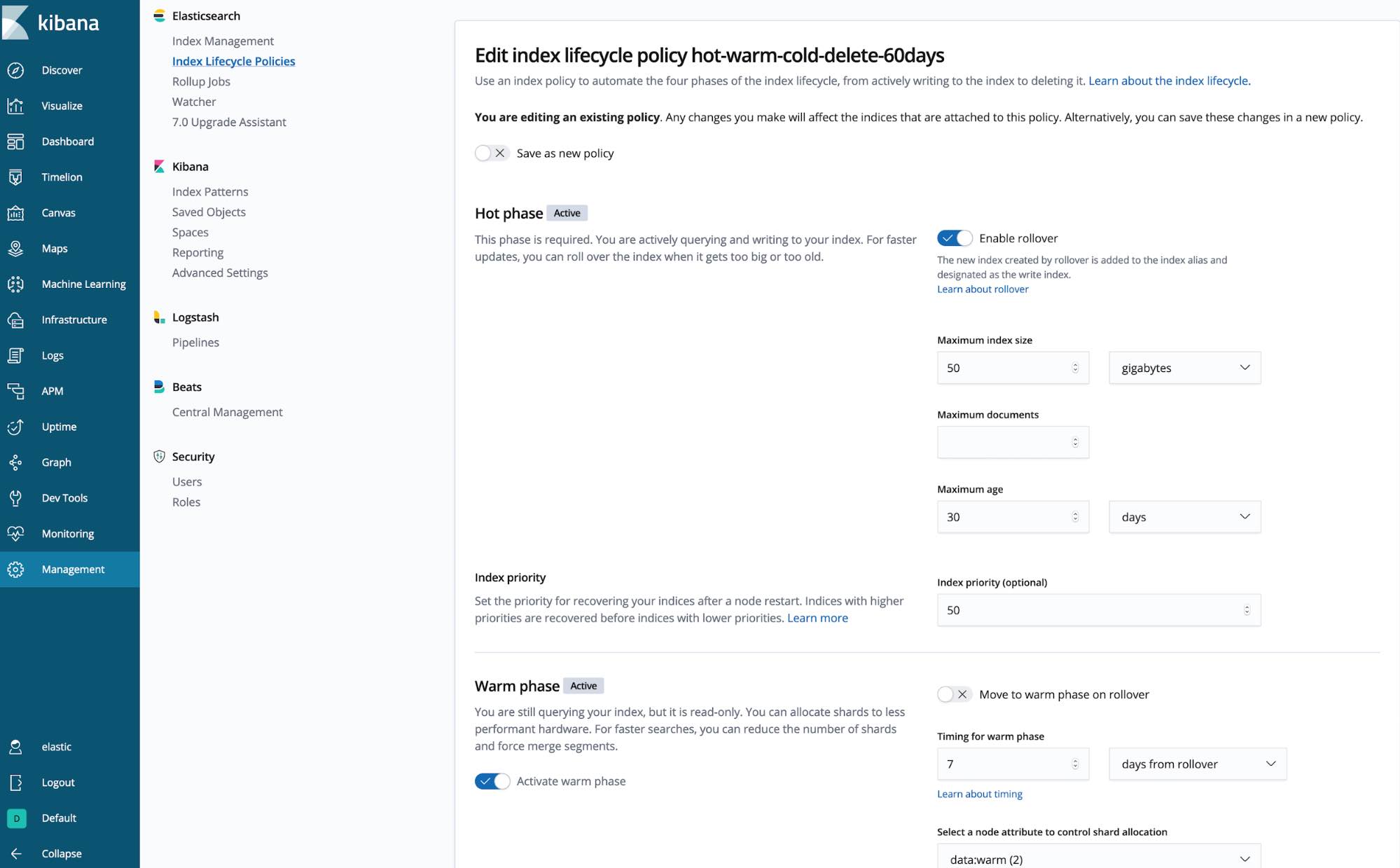Free Elasticsearch Service upgrade: 60% more storage for the same price with our improved hot-warm template
Today we are proud to announce a free, seamless upgrade for all our Elasticsearch Service customers across Azure, GCP, and AWS: 60% more disk storage for warm Elasticsearch nodes in our hot-warm deployment template.
What’s a hot-warm deployment?
Hot-warm deployment templates are an exclusive feature of Elasticsearch Service, allowing you to deploy Elasticsearch on top of both blazing fast NVMe SSDs (hot) as well as cost-effective spinning disks (warm). This powerful deployment architecture lets you continue to ingest and query recent data with speed and move older data to the warm tier to maintain visibility over longer periods of time while remaining cost effective.

This makes hot-warm deployments perfect for observability use cases such as logging, metrics, and APM, as well SIEM (security information and event management) use cases where you need interactive search speeds to hunt for threats while retaining visibility over long periods of time.
What can you do with 60% more storage?
With 160GB of storage per 1GB RAM you can use all your newfound space to house millions of additional log messages, APM transactions, server metrics, search documents, audit trails, and now also endpoint data. This new storage space is yours to fill with whatever data you choose for the same RAM-based pricing that Elasticsearch Service uses — at no additional cost. The best part is that with Elastic APM, Logs, Metrics, Maps, and SIEM, which are only available in Elasticsearch Service, you can gain true insights from that data with rich visualization experiences.
How else is Elastic helping me control my hot-warm deployment data?
Hot-warm deployments aren’t the only exclusive feature that Elasticsearch Service offers for these use cases. We also bring rich data controls with index lifecycle management (ILM), snapshot management, and index rollups. ILM and snapshot management allow you to define policies for how your data lives through hot-warm phases and how long before it is archived for long-term storage. Index rollups allow you to compress your metric data into precise summaries and gain massive storage savings.

Great, what do I need to do to get the additional storage?
If you already have an existing hot-warm deployment on Elasticsearch Service, you don’t have to do anything. We’ve automatically added the additional storage to all warm Elasticsearch nodes across all providers and subscription tiers, so you can just start adding more data!
If you’re new to Elasticsearch Service or don’t already have such a deployment, just go ahead and create one — it will come with the additional capacity by default.
What’s next?
Elastic has a longstanding commitment to our users to improve the cost effectiveness of the Elastic Stack, as evident from numerous improvements we’ve added to the stack over the years — from reducing the disk footprint of numerical and geo data with BKD trees to optimizing Lucene and Elasticsearch to address additional disk capacity with features such as frozen indices. Our Elasticsearch Service further augments this commitment by making these awesome features available to our users and providing a wide range of hardware options, streamlined operations, and one-click simplicity.
Ready to give the hot-warm template a try? Spin up a new deployment with a free 14-day trial.